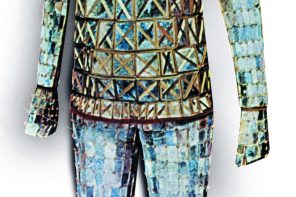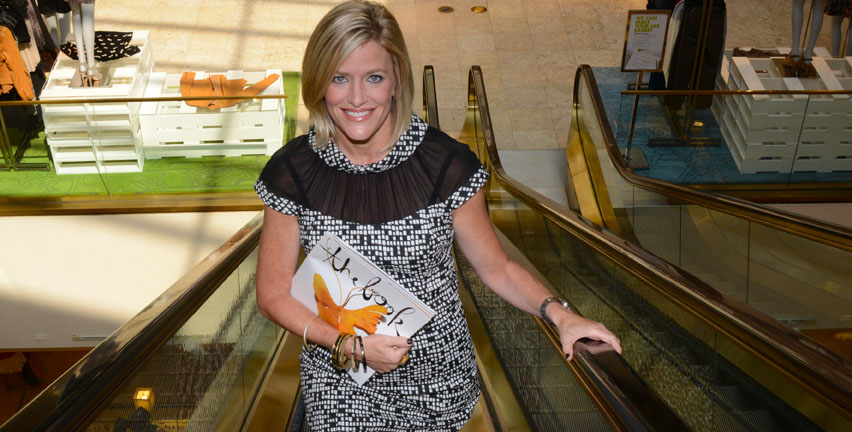It is no small irony that just at the moment when armor appeared to outlive its usefulness in the 16th century – swords having given way to muskets – it took on a new urgency.
“…paradoxically, the loss of its utilitarian function served only to enhance its prestige and symbolism,” writes curator Jeongho Park in the catalog for The Frick Collection’s new “Men in Armor: El Greco and Pulzone Face to Face” (through Oct. 26). “First, armor was a symbol of masculinity and military valor. The crustaceous costume gives the wearer a silhouette that conforms to the ideal masculine body.” Call it 16th-century shapewear.
But this is one irony in a show that is a fascinating quartet of portraits, spotlighting not only Jacopo Boncompagni, castellano of Rome’s Castel Sant’Angelo and head of the papal forces, and his captain Vincenzo Anastagi but the men who captured them respectively – premier society painter Scipione Pulzone and Roman newbie El Greco.
We asked Ian Wardropper – director of The Frick and a Mamaroneck resident – to weigh in on the inspiration for the show and what it tells us about the fashion of art:
Why do a show about “Men in Armor”? How did this exhibit come about?
“This is the 400th anniversary of El Greco’s death, so we wanted to do a small show featuring the artist. Later in the fall we will hang our three El Grecos together to coordinate with an exhibition at The Met (Metropolitan Museum of Art), bringing together other paintings by the artist in New York.
“The Frick for over 10 years has had a program funded by (The Andrew W.) Mellon Foundation and now named the Anne Poulet Fellows, which brings top graduate students here to finish their dissertations, learn curatorial work and do an exhibition. This is the latest show in the series, which has brought us ‘Piero della Francesca in America,’ among others.”
By the time El Greco painted “Vincenzo Anastagi” and Scipione Pulzone painted Anastagi’s military commander in “Jacopo Boncompagni,” armor was actually on the wane. So why was it important for men of a certain stature to be portrayed in armor?
“In the 16th century, firearms made armor less useful as a protective device, but it continued to have ceremonial and status importance, particularly in portraits.”
The two portraits –Boncompagni in his decorative, ceremonial armor and Anastagi in his plain, functional breastplate – offer contrasting observations on the men’s rank. But what do they say about the two artists as well?
“Boncampagni is shown wearing parade armor, while Anastagi is in battle gear. This implies that the first is of higher rank, while the latter was a working soldier (albeit, a captain). This was in fact the case. In the Boncompagni portrait, Pulzone is carefully flattering his sitter by showing him in lavish and expensive armor. On an artistic level, Pulzone is more literal-minded, depicting every detail and somewhat distracting from the portrait of the face, while El Greco is more interested in impressions like the glint off the breastplate, which allows the pose and face to communicate the man’s personality.”
Boncompagni’s breastplate is embellished with images of the god Mars, St. Michael and the Battle of Lepanto. Was it important for the iconography to reinforce masculine themes?
“Certainly, masculinity is reinforced by these decorations. Perhaps more importantly, they remind the viewer of Boncampagni’s intellect (he knew ancient literature and art), religiosity and battle record.”
An irony here is that Pulzone was the premier portrait painter of his day, while El Greco was trying to make a name for himself. Yet today, everyone knows El Greco and Pulzone is a case of “Scipione Who?” What does your exhibit say about the vagaries of artistic fashion and fame?
“Pulzone was a very good painter and this exhibition gives him a little credit by showing his influence on the formation of El Greco. But yes, Boncampagni hired the most famous painter of the day to ensure his immortality, while Anastagi hired the then little-known El Greco. Tastes change, and El Greco is recognized today as one of the greatest painters of all time. Hiring a brilliant artist (if you can recognize the talent!) is the more challenging approach with possibly more lasting results.”
For more, visit frick.org.





